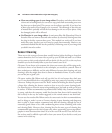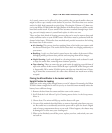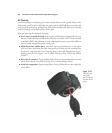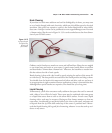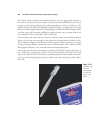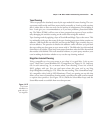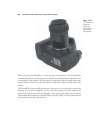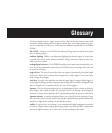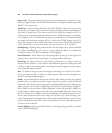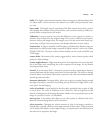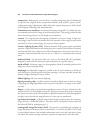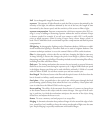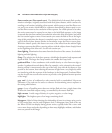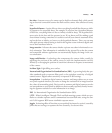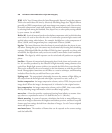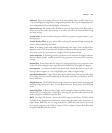aspect ratio The proportions of an image as printed, displayed on a monitor, or cap-
tured by a digital camera. The D7000’s movie feature, for example, includes options for
HDTV’s 16:9 aspect ratio.
Autofocus A camera setting that allows the Nikon D7000 to choose the correct focus
distance for you, based on the contrast of an image (the image will be at maximum con-
trast when in sharp focus). The camera can be set for Single-servo Autofocus (AF-S), in
which the lens is not focused until the shutter release is partially depressed, Continuous-
servo Autofocus (AF-C), in which the lens refocuses constantly as you frame and reframe
the image, and Automatic-autofocus (AF-A), in which the D7000 focuses using AF-S
mode, but switches to AF-C mode if the subject starts to move. The D7000 can also be
set for Manual focus. In Live View mode, your two choices are AF-S and AF-F.
backlighting A lighting effect produced when the main light source is located behind
the subject. Backlighting can be used to create a silhouette effect, or to illuminate
translucent objects. See also front lighting and side lighting.
barrel distortion A lens defect that causes straight lines at the top or side edges of an
image to bow outward into a barrel shape. See also pincushion distortion.
blooming An image distortion caused when a photosite in an image sensor has
absorbed all the photons it can handle so that additional photons reaching that pixel
overflow to affect surrounding pixels, producing unwanted brightness and overexpo-
sure around the edges of objects.
blur To soften an image or part of an image by throwing it out of focus, or by allow-
ing it to become soft due to subject or camera motion. Blur can also be applied cre-
atively in an image-editing program.
bokeh A term derived from the Japanese word for blur, which describes the aesthetic
qualities of the out-of-focus parts of an image. Some lenses produce “good” bokeh and
others offer “bad” bokeh. Some lenses produce uniformly illuminated out-of-focus discs.
Others produce a disc that has a bright edge and a dark center, producing a “doughnut”
effect, which is the worst from a bokeh standpoint. Lenses that generate a bright cen-
ter that fades to a darker edge are favored, because their bokeh allows the circle of con-
fusion to blend more smoothly with the surroundings. The bokeh characteristics of a
lens are most important when you’re using selective focus (say, when shooting a por-
trait) to deemphasize the background, or when shallow depth-of-field is a given because
you’re working with a macro lens, with a long telephoto, or with a wide-open aperture.
See also circle of confusion.
bounce lighting Light bounced off a reflector, including ceiling and walls, to provide
a soft, natural-looking light.
David Busch’s Nikon D7000 Guide to Digital SLR Photography490



